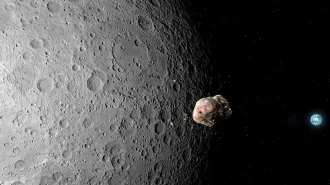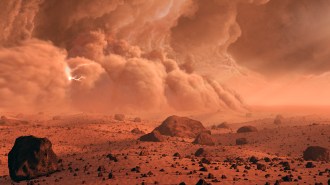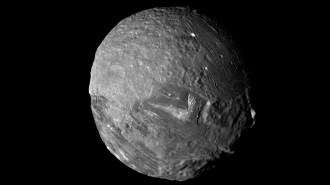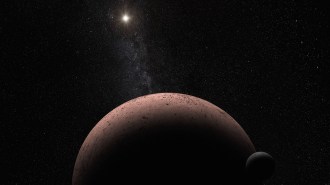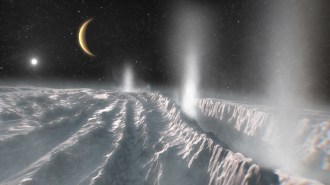Nitrogen fizz fuels ‘magic island’ on Titan, simulation suggests
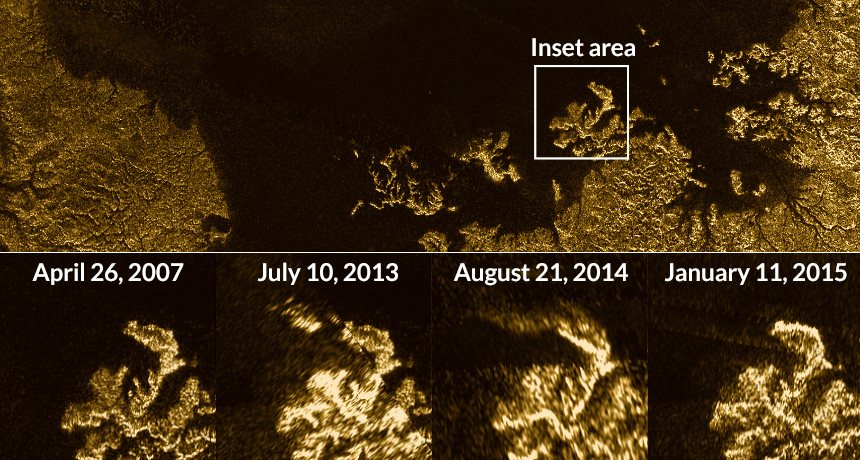
SHAPESHIFTER Nitrogen bubbles may be the source of an on-again, off-again bright spot, or “magic island,” on Saturn’s moon Titan. Cassini spacecraft images of the island, which sits in a hydrocarbon sea called Ligeia Mare, revealed the feature’s fickle nature.
Cornell/ASI/JPL-Caltech/NASA
